INSPIRATION XPD CCR
The Inspiration Rebreather started the CCR revolution over 20 years ago and the Inspiration XPD is based on the original spec – the larger unit with a longer duration scrubber and 3 litre cylinders - ideal for deeper, longer duration diving or a series of shorter repeat dives. The Inspiration XPD is the expedition divers rebreather of choice.
- Scrubber Size – 2.5kg
- Cylinder Size – 2 x 3 litres
- Ready-to-dive weight – 29.5kg
The Inspiration XPD is supplied complete with:
- The AP Vision dual oxygen controller package with wrist-mounted Handset and Head-Up Display (HUD)
- Counterlungs – Over-the-Shoulder or Back Mounted
- Cylinders, Hoses, First Stages and Case parts
- Contents Guages, Audible Alarm and Manual Inflators
- Integrated Weight Harness with thru-the-leg straps
- 16kg Buoyancy Control Wing with Auto Air - OC bailout valve
- PC Download & Logviewer Software
Customise-Your-Unit
All AP rebreathers are ready-to-dive with the above standard features but you can go further and spec your own unit – with multiple options and upgrades - to suit your personal preference and dive goals. See the Configurator link below.
Software Upgrade Options
- All AP rebreathers come with Dive Timer as standard. Upgrade to integrated Deco software – Nitrox or Trimix
- AP Divestore with AP Projection Diveplanner software
Hardware Options and Upgrades
- ADV – Auto Diluent Valve (with or without a Flowstop isolator)
- Scrubber Life Monitor – Tempstick
- OCB – Open Circuit Bailout Mouthpiece
- CO2 Sensor
- Over-the-Shoulder or Back Mounted Counterlungs
- 22kg Wing (Inspiration XPD only)
- 0.4 litre emergency mini-cylinder
- Rebreather Lifting Bar
- Gas Connector Systems
- Black Cover
All the information you need to decide which of the 3 AP Inspiration models is right for you - the options and upgrades - can all be found in the Which CCR? and Features sections of this website.
Don’t hesitate to call us to discuss - one of our experienced team will be happy to talk you through the options available.




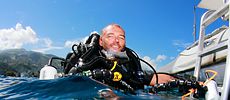
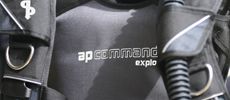
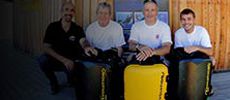
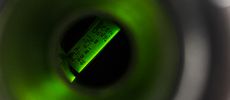
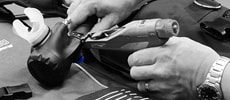


Inspiration Rebreathers are built on an individual customer specification. Build and delivery times will vary. For a more accurate timeframe, please contact our CCR sales team on: +44 (0)1326 561040
The Inspiration Rebreather started the CCR revolution over 20 years ago and the Inspiration XPD is based on the original spec – the larger unit with a longer duration scrubber and 3 litre cylinders - ideal for deeper, longer duration diving or a series of shorter repeat dives. The Inspiration XPD is the expedition divers rebreath
Read More